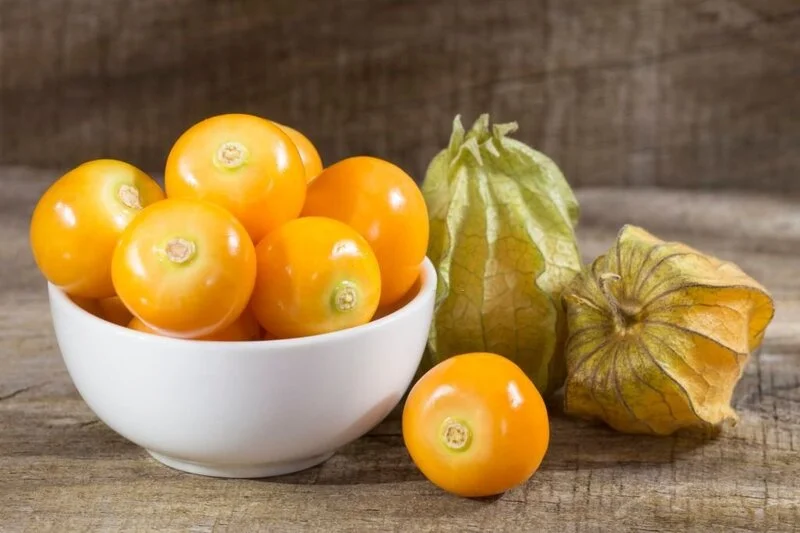The bright and tart golden berries, or Physalis peruviana, are as intriguing as they are tasty. They provide a touch of the exotic to salads and desserts, and their dried form makes for a tasty snack. But is there a stickiness every time you pick up one of these delicious fruits? It’s one of the things that makes people take a second look at golden berries. Golden berries seem sticky, but why? Let’s figure this out as a group!
- Terrasoul Superfoods Dried Golden Berries, 16-ounce Pouch
- Certified Organic, Non-GMO, Earth Kosher, Raw, Gluten-Free, Vegan
- Dehydrated to a moisture level of approximately 15%, to retain a soft and chewy texture
- Nature’s version of a lemonhead candy, Golden Berries make a delicious snack
Understanding Golden Berries
Golden berries are tiny, round fruits found in South America, and they’re roughly the size of a marble. They are members of the Solanaceae family, which also includes tomatoes and tomatillos. When ripe, their hues range from bright yellow to a deep orange, and they have a flavor that is both sweet and sour.
The nutritious value of golden berries is matched only by their wonderful flavor. Antioxidants, vitamin C, and fiber all abound, making them a smart dietary choice. However, golden berries are distinguished not only by their flavor and nutritional value, but also by their unique look thanks to their papery husk. The stickiness of golden berries can be attributed in large part to their protective husk.
The Protective Husk of Golden Berries
The calyx, or protective husk, of a golden berry is fascinating to everyone who has ever picked one up. The husk is papery and relatively thin, protecting the fruit from the elements while it develops and ripens. It’s not merely a gorgeous shell. It’s practical; it keeps the fruit safe while it’s still maturing.
It’s likely that you’ll come upon a sticky material as you peel back the husk to uncover the ripe fruit. This is a byproduct of the cultivation of the golden berry. Feeling sticky? That’s because you’re touching a plant secretion that keeps insects from getting to the ripe, luscious fruit inside the calyx. In the following paragraphs, we’ll investigate this intriguing “stickiness factor” in greater detail.
The Stickiness Factor
Stickiness isn’t just a fun fact about golden berries; it’s also a key aspect of their survival strategy. Many insects are attracted to the fruit because of its sweet and sour taste, however the secretion makes it difficult for pests to get the fruit. This tackiness also aids with husk adhesion, keeping the berry safe from predators until it is time to mature and be disclosed.
It’s worth noting that the golden berries’ stickiness doesn’t detract from their flavor or quality in any way. It’s just a quirk of nature for this unusual fruit. But how does this change the ways in which golden berries are cooked and eaten?
Preparing and Eating Golden Berries
Despite their stickiness, golden berries are simple to prepare for a meal or snack. It’s as easy as taking off the husk, rinsing the fruit in running water, and drying it on a towel. By doing so, you can enjoy the tart fruit without the sticky residue.
Fresh golden berries are delicious on their own, in salads, in baked goods, or even in jams and jellies. Their distinct flavor may complement many different foods, making them a useful addition to any cook’s pantry. Don’t allow the stickiness of these small golden gems put you off; it’s part of their allure!
Conclusion
Yes, golden berries are sticky, but that’s part of what makes them so interesting. It’s a form of protection against pests that helps each berry develop to full maturity. The complexity and beauty of nature’s design can be better appreciated if we learn the function of this stickiness. So the next time you grab a golden berry, instead of thinking of it as just another sticky fruit, think of it as a natural miracle. Remember that the only thing standing between you and a deliciously tart dessert is a fast rinse of that sticky golden fruit. Enjoy your meal!




